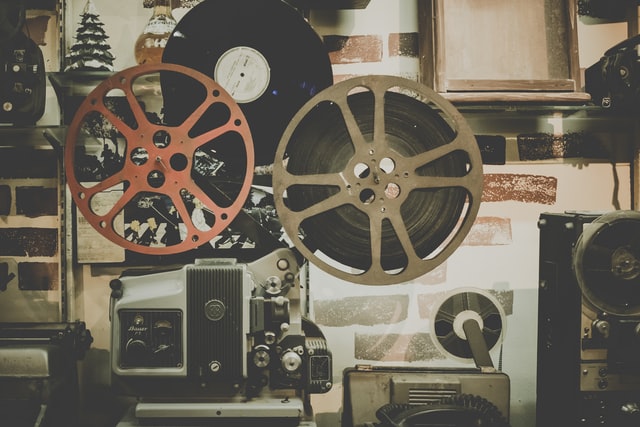“When you look at somebody they’re also always looking at you. . . Of course, it’s political but it’s also about cinema”i.
While I was in the Netherlands as an Erasmus exchange student, I enrolled in some gender studies courses, trying to dig deeper into feminist theory and history. “Sexuality in contemporary media culture” definitely caught my eye and inevitably I started studying about pornography history and some of the clichés on mass media regarding men, women, nudity and homosexuality. Nothing, I didn’t know, or at least didn’t think about, already: patriarchy, toxic masculinity, men profiting from naked women, queer-bating and gay condemnation; très banal. The course had much more to offer though. Of course, anyone could see the “hidden meaning” behind this old Dolce&Gabbana’s advertisement campaign with all these extremely sexy, half naked men standing like hawks above this poor, also half naked and extremely sexy, mistress in distress. But how easy is it for someone to see the idea of “spectatorship” and “scopophilia” and the visual nature of “agency”, behind Alfred Hitchcock’s master pieces Vertigo (1958) and Rear window (1954), for example? Easy peasy lemon not so squeezy. And then that sweaty body heat transformed into sweaty brain heat, ‘cause at first some neurons were definitely burnt.

“In this matter of the visible, everything is a trap”ii. In popular narrative cinema the spectator is gendered and the relationship of pleasure and looking is the fundamental key of the gaze theories. In 1975 the filmmaker and writer Laura Mulvey publishes her essay on Visual pleasure and narrative cinema and a feminist critique with loads of psychoanalytic influences, starts on the “male gaze”; women, being portrayed as visual objects, by a patriarchal unconscious, in pictures geared toward male voyeuristic viewing pleasure. Mulvey introduces to the world the idea of the connotation of a powerful, if not sadistic, position within the gaze, using the psychoanalytic notions of scopophilia and voyeurism, both referring to the pleasure one takes in looking, either they’re being seen looking or not. Men look at women and women watch themselves being looked at, and that’s how John Berger summarizes the male gaze in 1972: “The surveyor of woman in herself is male: the surveyed female. Thus she turns herself into an object—and most particularly an object of vision: a sight.” One of the most dominant examples of the voyeuristic male gaze is Alfred Hitchcock’s film Rear Window (1954). Jeffries’ girlfriend, Lisa becomes his mobile surrogate, while his temporary incapability to move, leaves him in the front of a window looking at his neighbors and Lisa, who’s trying to find clues on a murder. The male gaze is all over the place in this film; the female bodies are depicted as voyeuristic objects, which men contain and render, through the binoculars that Jeff is using, for example.

But this film is not just that. Many scholars, including Mulvey, argued that Hitchcock’s film is a metaphor for the act of film viewing itself. Jeff represents the cinematic audience, that freely look at the characters of a movie but they are not looked back by them. The windows are the cameras that frame Jeff’s neighbors actions, who’s looking at and desiring to see and know more about their lives. Just like the film spectators sitting in a darkened room, where they cannot be seen looking and the film characters will never return their gaze, but they desire to know more about them and take pleasure on looking at their actionsiii. Exciting interpretation, huh?
The complexity of power relations of looking do not stop in the male gaze but new concepts of the gaze have started rising in the surface of cinematography, since the 70’s. While the male gaze focuses on the dominant power men owning over women and their bodies, the female gaze places women in control of the camera’s view, belying the dominant conception that women are objects, not subjects, of the gaze. Now the movies, such as Thelma & Louise (1991) or Wonder Woman (2017), depict women as the dynamic protagonists, in some cases keeping the gendered power dynamics reversed, or not. One of my favorite films and a very good example of the female gaze is the Portrait of a lady on fire (2019). Although there is a social hierarchy present among the protagonist women, they do not act as such. Their relationships flourish under a veil of equality and freedom that experience in varying ways, looking at each other with respect.

This conversation could definitely last forever. There are so many exciting things in cinematography, more than just the mere pleasure of watching and there are more concepts to analyze and think of. But I guess that’s another bedtime story.
Notes:
i. Céline Sciamma, director of the movie “Portrait of a Lady on Fire”, in an interview for the 2020 Toronto International Film Festival: https://www.youtube.com/watch?v=mnbXcJjkc20
ii. Jacques Lacan, The Four Fundamental Concepts of Psychoanalysis (1973)
iii. You can read more in Sturken & Cartwright’s Practices of looking: An introduction to visual culture (2001)

Leave a Reply
You must be logged in to post a comment.